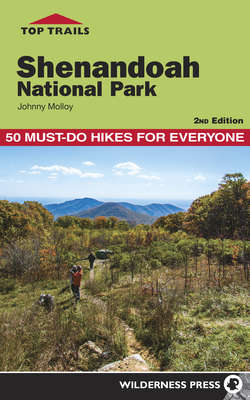Читать книгу Top Trails: Shenandoah National Park - Johnny Molloy - Страница 16
На сайте Литреса книга снята с продажи.
Flora
ОглавлениеShenandoah harbors plant species from throughout the Appalachian chain, from the hardwoods of the South to evergreens normally found in boreal climes, clinging to the highest points. Of course, the trees are the most visible piece of these complex ecosystems, gently overlapping and intermingling. Below the canopy rises more plant life. The Shenandoah you see today is the result of park protection, for much of this preserve was razed and used as pasture. There are few old-growth stands of trees; however, sporadic old-growth giants can be found along many trails. But the native ecosystems have reclaimed their rightful spots on the mountains. It’s not just the showy trees and wildflowers blooming throughout the warm season that get attention; Shenandoah also displays amazing arrays of humble yet biologically important plants from mosses to fungi.
This diverse plant mosaic blends and divides depending on elevation, precipitation, and exposure. The great oak forests of Shenandoah are a starting point: growing along the ridges and slopes of the mountains, red and chestnut oaks stand sturdy while producing fall mast for wildlife. Mountain laurel, dogwood, and scraggly pines often accompany the great oaks. In the park’s lower reaches grow Southern temperate woodlands, an agglomeration of hardwoods from sourwood to sassafras in drier areas. Cove hardwoods tower over lower reaches in hollows, dominated by tulip trees. Along the streams towering white pines, black birch, and mountain laurel provide shade. The hemlocks have been decimated by the hemlock woolly adelgid. Some stands and individual trees have been preserved, and we hope they will regenerate in the future.
On the higher ridges with cooler, moister conditions and the highest elevation watersheds, the vegetation morphs into northern hardwoods, such as yellow birch, beech, and cherry. Rise still higher, and you will occasionally find red spruce or Fraser fir trees, the two northern-climate trees that hug the highest peaks of the Appalachians, where it is still cool enough for them to survive. Shenandoah has no great stretches of boreal forest, just small pockets of trees sprinkled in the highlands. Throughout the park, locust, pine, and brambles continue reclaiming former clearings, transforming them into towering woodlands once again. Together these forest types, blending and intermingling, comprise a diverse biological ecosystem worthy of national park protection.
